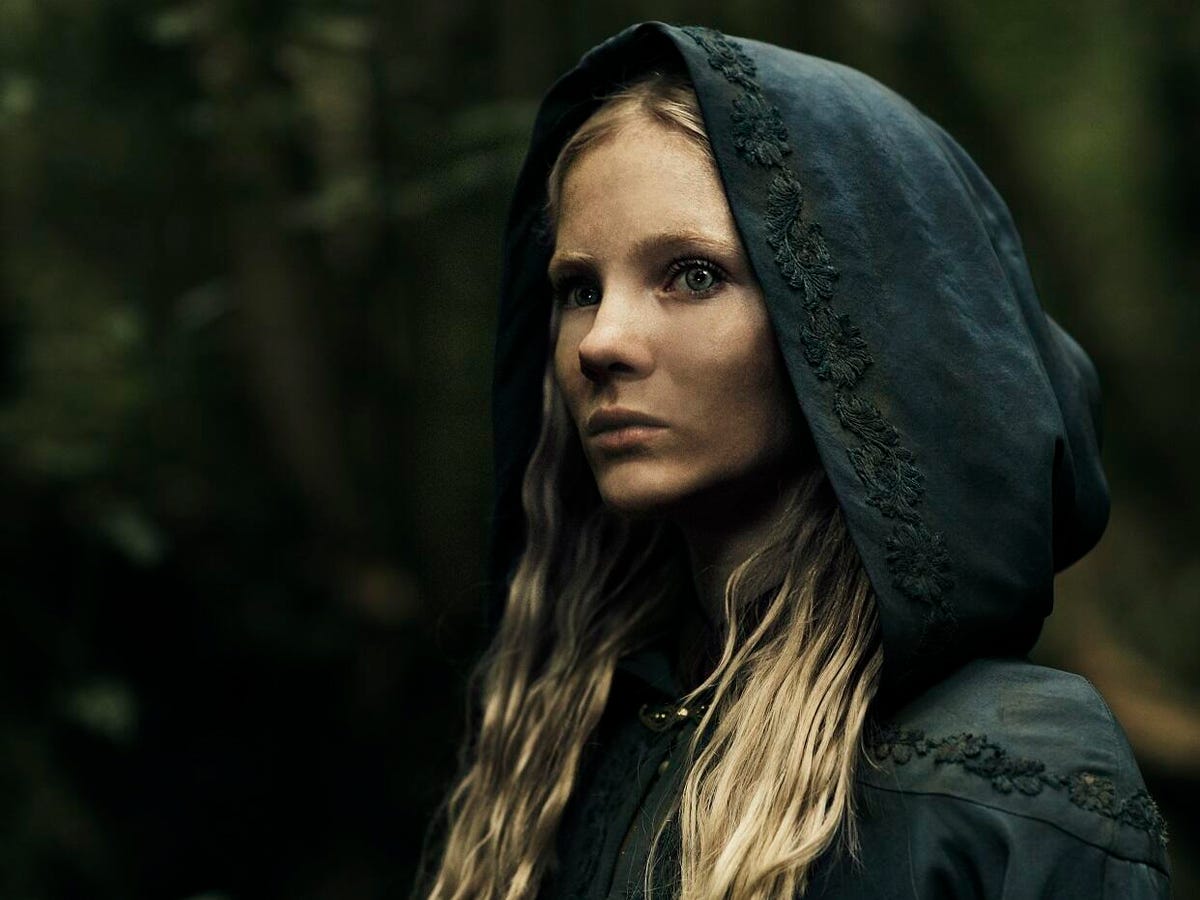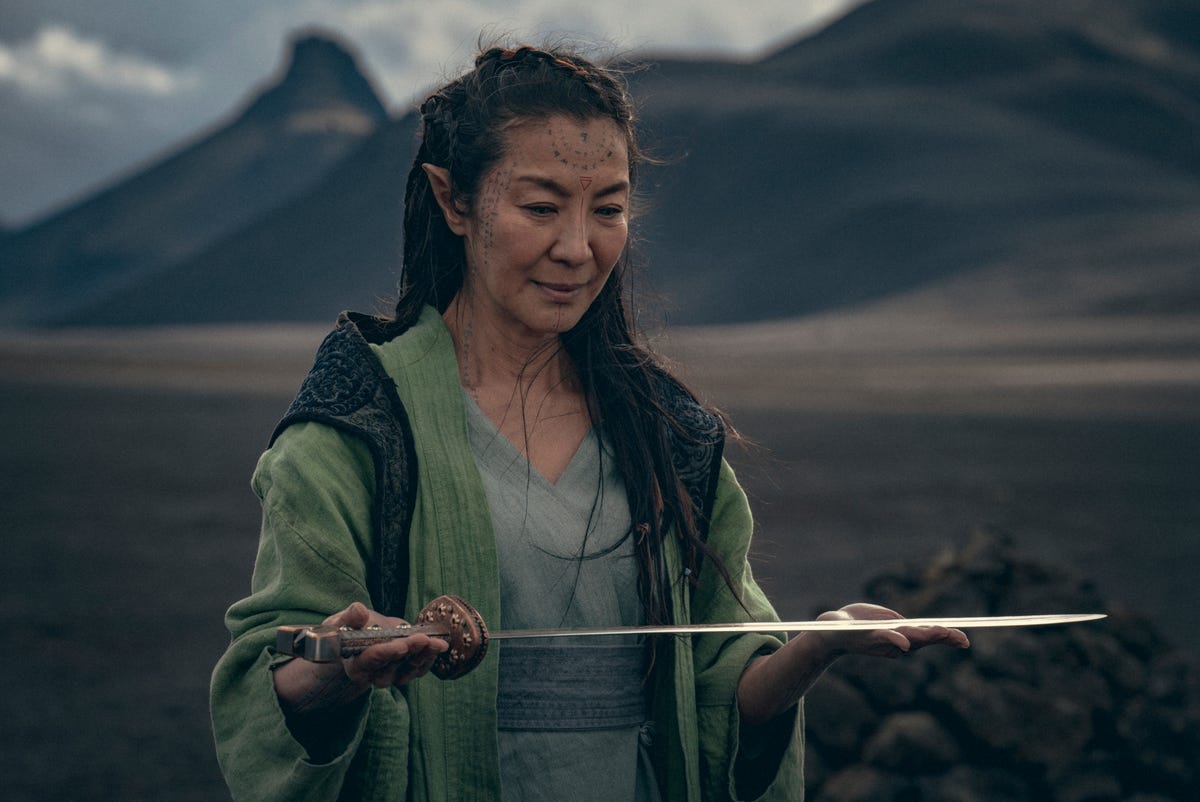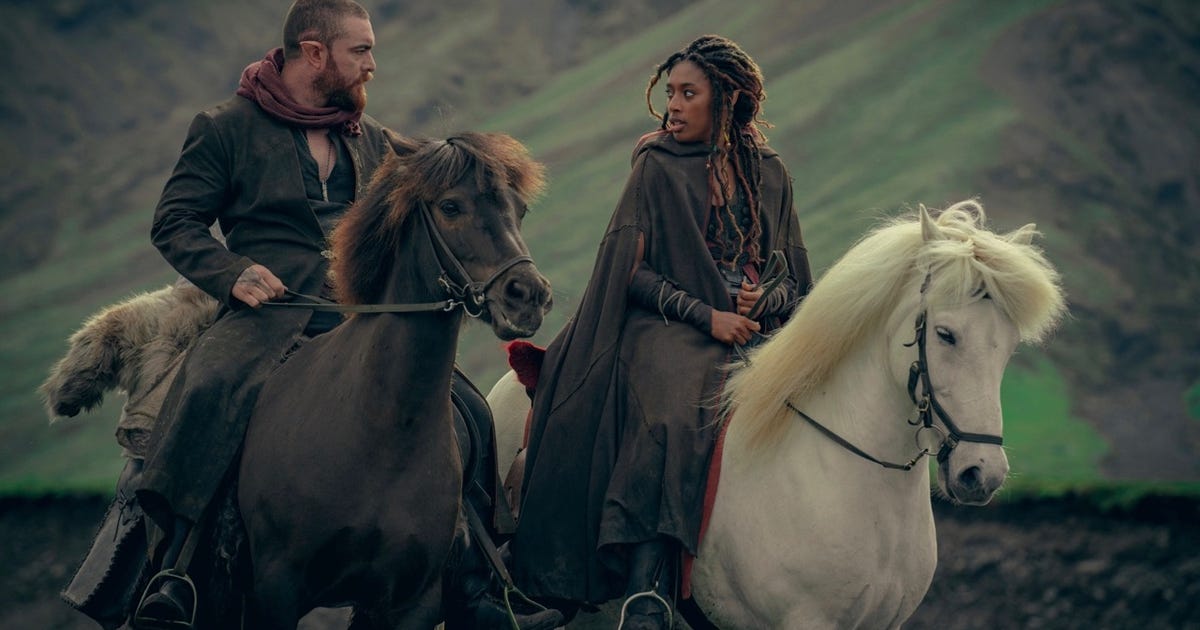As far as origin stories go, one character is typically at the center. But with The Witcher: Blood Origin, we saw the genesis of quite a few, didn’t we? More than that, the whole Conjunction of the Spheres played out on screen, which provides more context for how and when monsters and humans arrived on the Continent.
Several great mysteries were solved over the Netflix miniseries’ four episodes, including Witcher 1.0’s signature grunt, the source of monolith magic and a piece of Ithlinne’s prophecy. A few dots were connected to seasons 1, 2 and 3 of The Witcher, providing background for the main storylines and shedding light on what the future may hold for Geralt of Rivia, Ciri and Yennefer. Let’s discuss key events in this prequel series’ ending and what it all means for Netflix’s Witcher universe.
Warning: Spoilers ahead for The Witcher: Blood Origin miniseries.
First, a look back at The Witcher season 2
By the time The Witcher season 2 ended, viewers learned Duny was Emhyr var Emreis, aka the White Flame and Ciri’s father. Not only is he alive, but he also ordered the elf baby’s murder and he’s running things in Nilfgaard under a scary alias. He wants his daughter back.
At the same time, Francesca and the other elves find out Ciri has Elder Blood and could save elfkind. However, she’s still upset about her and Filavandrel’s murdered elf baby, which was to be a symbol of hope. She’s pissed at the humans, who are at the top of the social ladder in the present era. And in another ending scene, the brotherhood put a bounty on Ciri and anyone who protects her. Everyone wants Ciri for one reason or another. In the season 2 finale, Jaskier was chilling at the Witchers’ bunker, unaware Stregobor was looking for payback.
Looming above all this is chatter about the end of human civilization (via the Black Sun curse) and the demise of elves — and the world — according to Ithlinne’s prophecy. As a reminder, white frost will end it all and the world will be reborn from the seed of Elder Blood. We meet a young Ithlinne herself in The Witcher: Blood Origin during the elves’ Golden Era, and she’s full of predictions. Buckle in.
What’s the significance of Fjall and Éile’s destiny baby?
A lot happened in the last episode of The Witcher: Blood Origin, but one unmissable moment is Éile’s pregnancy. When Ithlinne touched her stomach and went into fortune-telling mode, she told Éile of a last seed that will carry the note of a song that will end all times, and one of her blood shall sing the last. That means the baby could inherit Éile’s singing talents as the Lark, but maybe that’s just the beginning.
She and Fjall conceived the child after he took the Witcher potion, so there are multiple factors at play. They are both elves, and he had magic coursing through his system. Don’t be surprised if this baby is part of Ciri’s magical family tree.
The baby Éile carries is very important to the Elder Blood gene.
Netflix
Post-credits scene reveals Avallac’h and Princess Ciri
Flashback to the first episode in season 1 of The Witcher. Remember little Ciri disguised as a boy, playing a game in the street with a group of kids? For a moment, she glances over to an empty doorway as if someone is watching her. No one is there — or so it seems.
A few minutes after the credits start to roll in the final episode of The Witcher: Blood Origin, we see the young elven sorcerer Avallac’h dressed in a blue cloak and holding the monolith grimoire of magic. He’s standing in the doorway, and he slowly grins at Ciri. We don’t know if she really sees him, but the pair have a connection in The Witcher video game and books.
Though he originally lived on the Continent, Witcher lore says Avallac’h relocated to a different realm, Aen Elle. But he’s able to teleport between worlds and spheres. He believes in elf supremacy and told Geralt about Ithlinne’s prophecy on the world ending and only an Elder Blood child being able to save everything. Back in the day, he was supposed to marry Lara Dorren, an elven sorceress who carried Elder Blood. She instead fell for a human and had one child — a descendant of Ciri.
In Blood Origin, we see Avallac’h’s own origin as a sweet mage who helped Merwyn and was dangled off a balcony by Balor. He was present when Balor and Syndril fought at the monolith, and understands the magic that caused the Conjunction. His story gets deeper, though. It’s highly possible we’ll see him again in The Witcher season 3 as either Ciri’s mentor, would-be captor, or both.

Ciri’s blood and magic are everything to elves, the White Flame and mages like Avallac’h.
Netflix
Eredin becomes leader of the Wild Hunt
As I mentioned in my review of The Witcher: Blood Origin, showrunner Declan de Barra chose the Conjunction of the Spheres as the focus of this series. He selected the moment from the books and built this new show around it. Series Executive Producer Lauren Hissrich spoke with Naekranie.pl and explained that de Barra also wanted to tie together our season 2 glimpse of the Wild Hunt and its origin. Enter Captain Eredin.
He’s one character many Witcher fans expected to meet in Blood Origin, and in the beginning, he’s young and somewhat naïve. He helped Merwyn with the coup and forged an untrustworthy alliance with Balor. Balor sends him through a portal that we now know led to the world where the Wild Hunt brigade is trapped. Guess who formed the famous, villainous crew? Yup, Eredin. In episode 4, he digs up that skeleton mask from the sand and puts it on, marking the beginning of his evil era as king of the baddie elves.
Remember the last episode in season 2 of The Witcher? For a brief moment, Yennefer, Geralt and Ciri teleport into the Wild Hunt realm, and Voleth Meir — aka the Deathless Mother — stops possessing Yennefer’s body. A source of chaos magic, Voleth Meir then rejoins Eredin and his riders. That short scene signals drama ahead. Though Geralt knows that Voleth Meir has been on the Continent since the Conjunction of the Spheres, Blood Origin reveals Eredin has been stuck in that ghostly world for just as long. They want Ciri to join them, and fans can probably guess it’s because her Elder Blood and magic can free them. Look out for Eredin in the upcoming new season.
How Jaskier fits in
The Witcher: Blood Origin begins and pretty much ends with Jaskier. When we first see him, he’s lying on a burning battlefield as elves and humans duke it out around him. Then a Seanchaí (Minnie Driver) freezes time, transports him to a safe place and tells him about the heroic seven (Fjall, Éile, Brother Death, Meldof, Scían, Syndril, Zacaré). She leaves Jaskier in episode 4 with Ithlinne’s prediction about Éile and Fjall’s baby.
Two things to note here. Ithlinne’s Armageddon prophecy touches on elf blood being spilled first. It looks like the war between the humans and elves — as prophesied — has already begun when Jaskier appears in the show’s opening scene. It could be a dream or an actual battle, but let’s count on seeing it in a future episode of The Witcher.
The other thing to flag is why the Seanchaí urges Jaskier to sing the song to bring hope to oppressed elves. Is his musical pep rally meant to cheer them on in a fight against the humans or to save the world from the frosty apocalypse? Though Jaskier thinks Geralt won’t like how Witcher No. 1 was an elf, perhaps his song about the seven will help the heroes. We’ll find this out in a future season.

Jaskier’s intel about the OG Witcher, Fjall, could help Geralt and the rest of the gang.
Netflix
Questions for The Witcher season 3
Now that so many people are after Ciri, will she learn how to magically jump through spheres using monolith — or chaos — magic? Will she, Geralt and Yennefer figure out how to destroy the old stones, which, according to Meldof, were once buried underground and used to make the earth fertile? Better yet, can they rid the world of monsters once and for all? We’ll have to watch it unfold.
What about the super mage, Avallac’h? He looks young in the prequel series and in season 1 of the original Witcher show, so we’re unsure if he’ll age up when he appears again. Older Avallac’h is cynical and a lot meaner than this version, but viewers should expect to see him eventually link up with Ciri in some incarnation.

This sword is a big deal in The Witcher: Blood Origin, but does it matter at all for the main story?
Netflix
It’ll be interesting to see if any magical swords come into play. Michelle Yeoh’s character, Scían, had her own beef with the royals in Xin’trea. Her sacred blade, Soulreaver, was stolen and she succeeded in her personal mission to retrieve it. Is there space for more Ghost Tribe vibes and the sacred sword in future episodes of The Witcher? It isn’t clear, but Ithlinne’s ominous prophecy also mentions a time of swords and axes.
The biggest question has to do with said prophecy. Elder Blood is connected to the fate of the world, so harnessing its power through Ciri can go left or right. How will she start — or stop — the apocalypse?
The Witcher season 3 is due to hit Netflix in the summer of 2023, so stay tuned to see how the heroes and villains put the puzzle pieces together.
2023’s Best TV and Streaming Shows You Can’t Miss on Netflix, HBO, Disney Plus and More
See all photos




















Discussion about this post